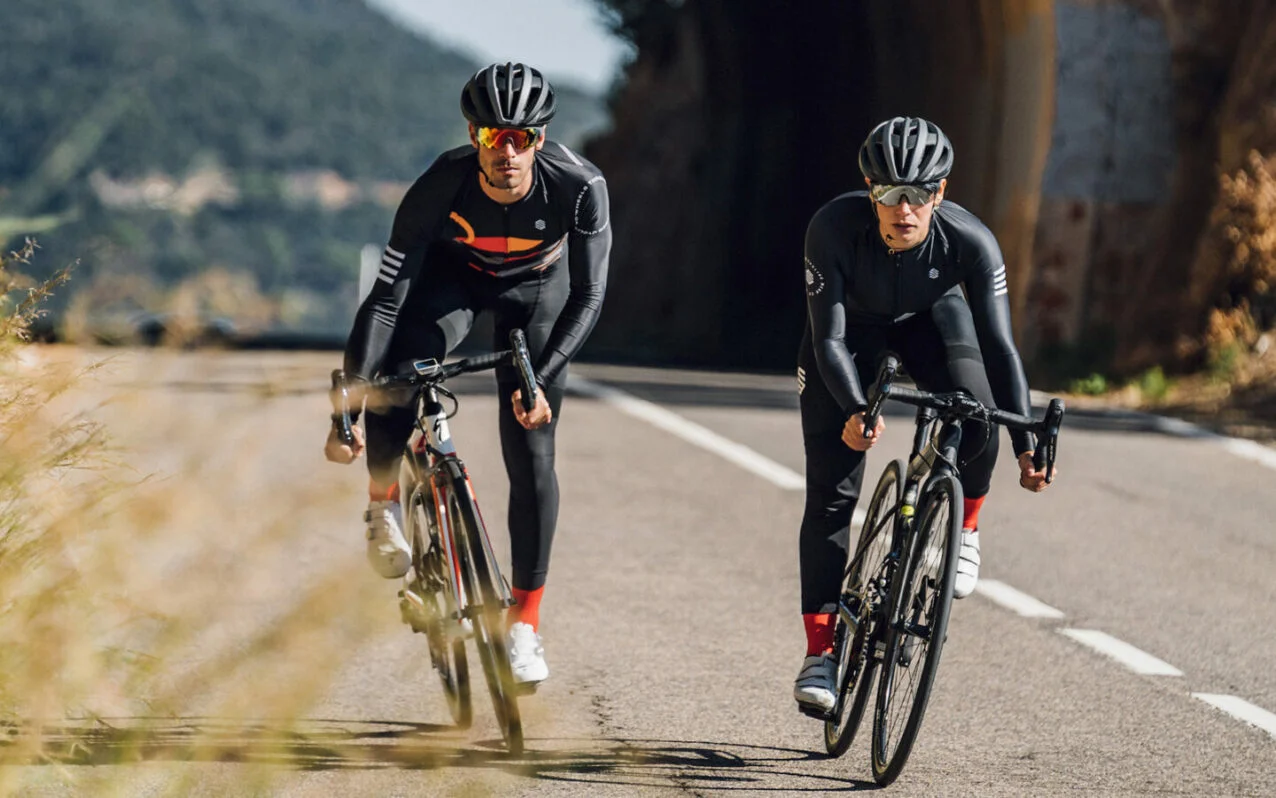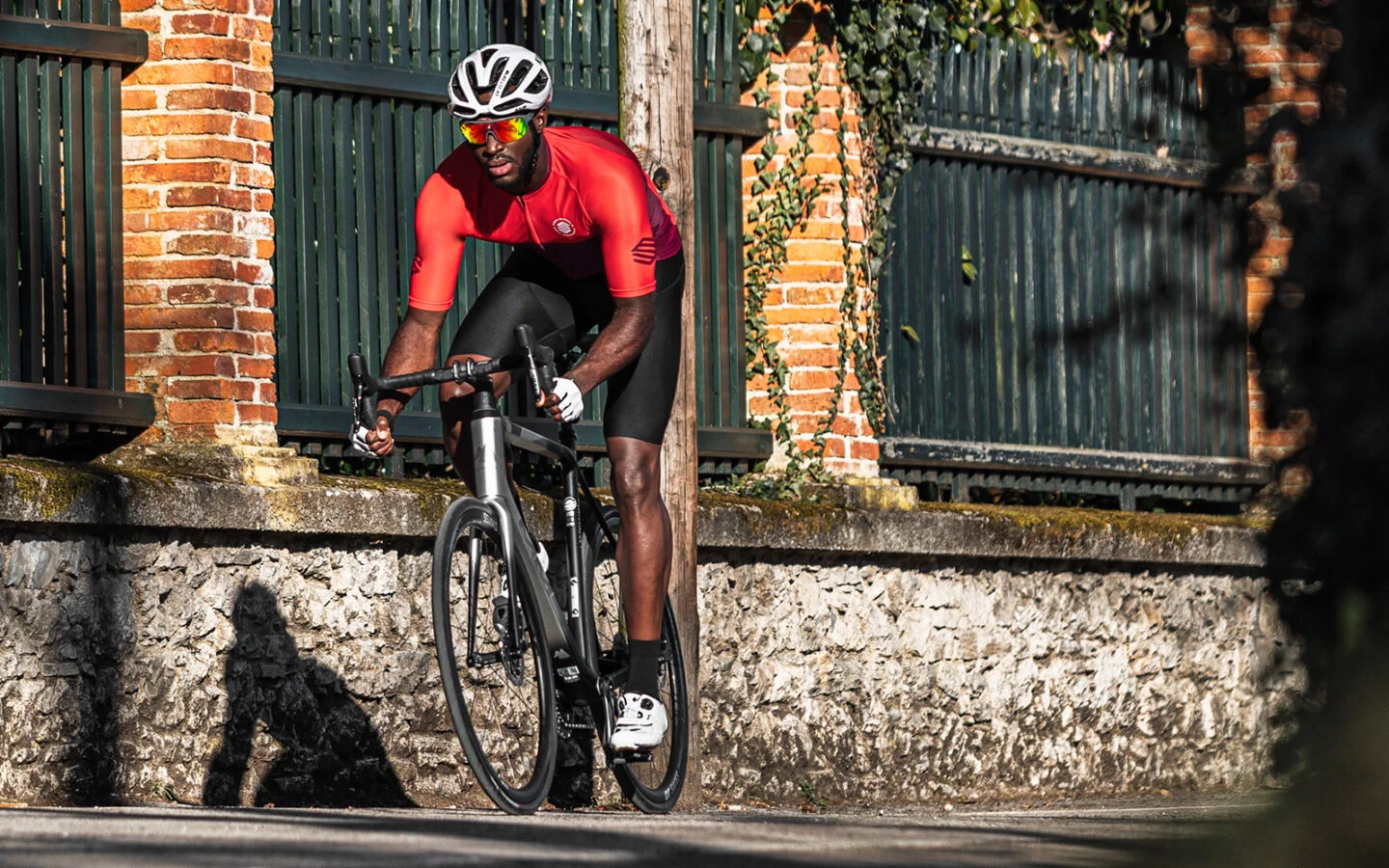In cycling we use a variety of different electronic devices, and one of the most useful and popular ones is the power meter. In this blog post, we’ll dive into what a power meter is, how it works, what it is for and what types you can find on the market, as well as the pros and cons of each of them.
What is a power meter?
A power meter is essentially a device that measures the amount of force exerted while pedaling. This energy is measured in watts and it’s a quite precise piece of data of the amount of exertion put in a certain moment.

Logically, in order to receive and see this data, a power meter previously installed on your bike has to be connected to a cycling computer, a smartphone or another device through an ANT+ network or Bluetooth. Then, information gets sorted and stored in them for a later analysis. This can be very useful for cyclists who want to improve their performance and training sessions, as it allows you to control effort in a more precise manner while maintaining a specific intensity, aside from measuring progress over time and adjusting workouts accordingly.
How does a power meter work?
A cycling power meter measures force thanks to electronic sensors known as strain gauges, placed in specific areas such as the pedals, cranks, sprockets or bottom bracket. These sensors read the changes in shape of the material according to the power exerted on it, and transform this information into an electric signal that’s sent to a processor.

The processor takes this electric signal and translates it into watts. Data is sent to the screen of the cycling computer, smartwatch etc. so that the cyclist can see the power exerted displayed in real time.
And just like any other electronic device, a power meter needs energy and that energy is taken from rechargeable batteries or button batteries.
What is a power meter for in cycling?
Firstly, as we have previously explained, it’s used to measure the force generated while cycling in real time. This allows the cyclist to know how much effort they’re putting in, how much energy is being used and how much energy is left.
Thanks to all this information, cyclists can control and maintain a certain intensity, which helps not only to improve performance but also maximize training sessions, avoid overexertion, eat accordingly and avoid injuries as well.

A power meter can also be useful for cyclists who simply want to monitor their effort, know their limits and adjust their rhythm and speed in order to avoid fatigue. Plus, it can also serve as motivation to hop on the bike.
Last but not least, a power meter can also contribute to improving posture on the bike, as well as identifying and fixing muscle imbalance issues in the legs, which reduces risk of injury.
Types of power meters
Power meters can be classified depending on where their sensors are located, each and every one of them with pros and cons. Some models measure legs individually with sensors on each side. Others have a single sensor located on either the left or right side, and give an estimate of the side without a sensor. The following types of power meters are the most common ones:
- Pedal-based power meters. They measure the torque on the pedal axes. They can be installed and swapped between bikes easily, which makes them a good option for cyclists who use more than one bike. They’re not available for all kinds of road and mountain pedals, but they are for the most common ones like Shimano, Look, SPD or Speedplay.
The most popular pedal-based power meters are: Favero Assioma, Garmin Rally and Wahoo PowrLink. Their price range, depending on the brand and whether they have sensors for one or both legs, goes from €400 to €1,000.
- Crank-based power meters. This type of power meter measures the torque on the crank arms and asks for a little bit of knowledge on how to install them. They can’t be swapped between bikes that easily either. The great variety of cranks (brand, length, type of axle…) can become an obstacle when it comes to purchasing this type of power meter.
The most popular crank-based power meter models are 4IIII and Stages, and their price range goes from €250 to €1,200 depending on the type of crank and whether it has sensors for one or both legs.
- Spider-based power meters. The spider is the piece that links the right crank with the chainrings, where the processor and sensors of this type of power meter are located. This is why they can’t measure both legs individually, but they can give a quite precise estimate. Problems are: installation, compatibility and complicated swapping between bikes.
Quarq, Power2Max, Rotor, Xcadey, Sigeyi or the expensive SRM are some of the brands that manufacture this type of power meters. The price range goes from €300 to €1,800, or even more.
- Bottom bracket power meters. They measure the torque on the bottom bracket, and aside from being quite precise, they also have sensors for both legs. On the downside, assembling them is complicated not only because there are more pieces to dismount, but also because there are too many different sizes to choose from, and incompatibilities may arise. They are also difficult to swap between bikes.
The Spanish brand Rotor is the most popular one among this type of power meters, prices ranging from €400 to €1,000. Easton is another manufacturer that offers this type of power meter.
In conclusion, each type of power meter has its advantages and disadvantages. Each cyclist should evaluate their needs, the type of bike they own and their budget before choosing one.
Do you need a power meter?
A power meter is not a necessary tool to have, but it is actually useful for cyclists who want to improve their performance and optimize their training sessions. If you want to track your progress and goals, a power meter can be a good investment since it gives you quite precise data to have control over the effort you’re putting in, aside from identifying and fixing unbalance and overexertion to prevent injuries and fatigue.
Even so, you should bear in mind that power meters are an expensive investment after all, and they might not be an essential tool for all cyclists. If you’re a beginner and your only goal is to enjoy cycling, you don’t really need a power meter. Plus, if you’re not going to be using the data provided by a power meter, then the investment is not really worth it either. Spend your money on simpler and more budget-friendly tools instead.





There is also a newer version of power meter on the market; the Powerpod by Velocomp.
This uses all kinds of gravity and wind sensors combined with cadence and speed to generate true wattage.
I was sketchy at first but was pulled to it due to the ease of hot-swapping between bikes and bie types.
Just a quick plug in to change the profile or (if cadence and speed sensors are different between bikes) it will do it itself once these sensors have been detected.
Very quick and easy to set up, incredibly accurate and detailed, increibly good value for muti bike use (and muti user). Just a bit ‘jumpy’ in the first K or so… (or at least that is what I have found).
Check out https://velocomp.com/
Hello Ben,
Thank you for reading the post and for your comment adding information. You’re right, Powerpod is another alternative. The same company (Velocomp) has another useful gadget if you’re interesting in watts savings, Aeropod, but this is a CdA sensor.
Best
Siroko